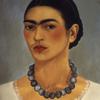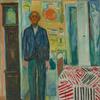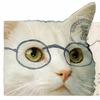Still Foward-Looking: The Four Freedoms
- January 24, 2017 15:40
In the future days, which we seek to make secure, we look forward to a world founded upon four essential human freedoms.
The first is freedom of speech and expression—everywhere in the world.
The second is freedom of every person to worship God in his own way—everywhere in the world.
The third is freedom from want—which, translated into world terms, means economic understandings which will secure to every nation a healthy peacetime life for its inhabitants—everywhere in the world.
The fourth is freedom from fear—which, translated into world terms, means a world-wide reduction of armaments to such a point and in such a thorough fashion that no nation will be in a position to commit an act of physical aggression against any neighbor—anywhere in the world.
That is no vision of a distant millennium. It is a definite basis for a kind of world attainable in our own time and generation. That kind of world is the very antithesis of the so-called new order of tyranny which the dictators seek to create with the crash of a bomb.
—Franklin D. Roosevelt, excerpted from the State of the Union Address to the Congress, January 6, 1941
This famous speech, delivered during World War II before Americans rose to action from a stance of isolationism, was partly a counter statement to growing fascism worldwide. Both a call to arms and a vision for peace, FDR's words were popular in sentiment but not without critics.
At the time, the Four Freedoms was also an appeal for more aid to Britain against the advance of the Axis. It broadly promoted ideals of democracy that numerous artists have conveyed in memorable (and not so great) pieces depicting FDR's message of four fundamental human rights: Freedom of Speech, Freedom of Worship, Freedom from Want, Freedom from Fear. (The first two freedoms are, of course, in the Bill of Rights while the second pair of ideals would form parts of the United Nations Charter.)
Celebrated architect Louis Kahn created the impactful Franklin D. Roosevelt Four Freedoms Park on New York's Roosevelt Island which opened in 2012. But American illustrator Norman Rockwell, who went on to create iconic images of the Civil Rights era, made perhaps the most recognizable art series of the Four Freedoms for the Saturday Evening Post editions published February 20, February 27, March 6, and March 13 in 1943. The U.S. Treasury Dept. and the Post sent the original painitings (now in the collection of the Norman Rockwell Museum) on a "blockbuster" tour, raising 133 million dollars in war bonds sales, from showing the works to over one million people at department stores and other venues in 16 cities.
Purchasers of war bonds received a set of Four Freedom prints, and the Office of War Information printed another four million sets of posters of the paintings. Each was printed with the words “Buy War Bonds.”
Grandma's turkey delviery at a packed Thanksgiving Day table - representing Freedom from Want -- is certainly a widely-known and enduring American image. However, the artist himself was not so convinced by it. "I never liked 'Freedom from Fear' or, for that matter, 'Freedom from Want,'" he wrote. "Neither of them," Rockwell explained, "had any wallop."
"Freedom from Fear" depicts a couple tucking their little children into bed; the father holds a newspaper with a headline reading "Bombings." Bruce Cole, former chairman of the National Endowment for the Humanities, writes in a Wall Street Journal article: "This reference to the war is so specific that it conveys little about fear or Roosevelt's plan for universal disarmament. Rockwell just could not get his hands around these airy abstractions."
“It was so darned high-blown,” Rockwell said of the difficulty in putting the Four Freedoms into a painted scene, “Somehow I just couldn’t get my mind around it.”
"Freedom of Worship" shows a wide swath of peoples in modes of worhip, but appears more like a portrait montage of mostly white folks.
The work that packs the most punch from the series is arguably "Freedom of Speech."
Here, Rockwell depicts a familiar subject, a man at a town meeting speaking without fear and with his head held high. As Cole writes of the Lincoln-lookalike speaker: "In Rockwell's vision he has become not only an active public participant in democracy, but a defender of it. He is the very embodiment of free speech, a living manifestation of that abstract right—an image that transforms principle, paint and, yes, creed, into an indelible image and a brilliant and beloved American icon still capable of inspiring millions world-wide."











100x100_c.jpg)







![Peter Paul Rubens (Flemish, 1577–1640), After Titian (Tiziano Vecelli) (Italian [Venetian], c. 1488–1576), Rape of Europa, 1628–29. Oil on canvas, 71 7/8 x 79 3/8 in. Peter Paul Rubens (Flemish, 1577–1640), After Titian (Tiziano Vecelli) (Italian [Venetian], c. 1488–1576), Rape of Europa, 1628–29. Oil on canvas, 71 7/8 x 79 3/8 in.](/images/c/e2/2e/Jan20_Rape_of_Europa100x100_c.jpg)